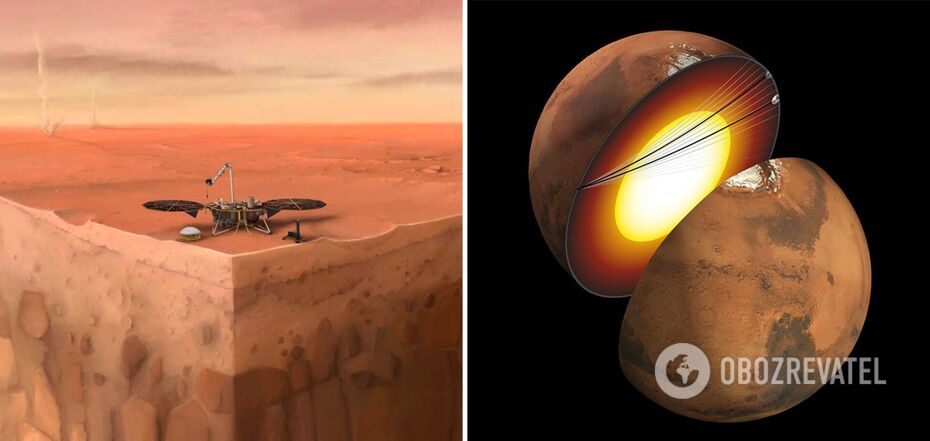News
Radioactive sea of magma discovered beneath Mars' surface: it's much stranger than we thought
A new analysis of seismic data obtained by NASA's InSight lander has shown that a huge radioactive magma ocean is hidden beneath the surface of Mars. Scientists believe that this layer, which is completely unlike anything found on Earth, reaches a depth of 200 kilometers.
The discovery of this magma sea is described in two independent studies published in the journal Nature. According to Futurism, it may explain why previous calculations showed that Mars' core is unusually large and has a lower density.
"This doesn't exist on Earth," Amir Khan, lead author of one of the studies and a geophysicist at the Swiss Federal Institute of Technology Zurich (ETH Zurich), said in an interview with The New York Times.
The new data suggest that Mars' core may be small and dense, like the Earth's, and that its true size is hidden by a layer of magma. These findings also cast doubt on the evolutionary history of Mars and possibly other terrestrial worlds.
Since 2018, InSight has been helping scientists detect and study seismic tremors on Mars. But over the years, none of the "Mars rovers" has been strong enough to penetrate deep enough into the interior of the red planet to reveal anything about its core.
According to preliminary data, scientists estimate that the radius of Mars' core is about 1850 km. This suggests that it is not dense enough to be a homogeneous ball of liquid iron. Instead, it must contain carbon, oxygen, and hydrogen.
Other scientists disputed this, emphasizing that such light elements should have long since evaporated under the influence of magma or the sun.
In August and September 2021, two huge tremors occurred on Mars, which permeated the planet with vibrations.
Analysis of the data obtained from these vibrations showed that the radius of the core was smaller than thought - about 1680 kilometers and most likely consisted of almost pure liquid iron.
"This means that the average density of the Martian core is still somewhat low, but is no longer incomprehensible in the context of typical planet formation scenarios," Paolo Sossi, co-author of one of the studies and a planetary scientist at the Swiss Federal Institute of Technology Zurich, said in a statement commenting on the work.
However, the liquid core of Mars has created a new mystery for scientists. It is known that the now barren Mars had a protective magnetic field in the past. Scientists believed that, as in the case of Earth and other terrestrial worlds, its appearance was facilitated by the gradual cooling of the core, which caused the remaining liquid iron to swirl and generate a magnetic field.
But it turns out that the magma sea simply did not allow the core to cool, so something else was responsible for Mars' magnetic field.
Earlier, OBOZ.UA reported that scientists have identified the source of a powerful earthquake on the "dead" Mars.
Subscribe to OBOZ.UA channels in Telegram and Viber to keep up with the latest events.



























